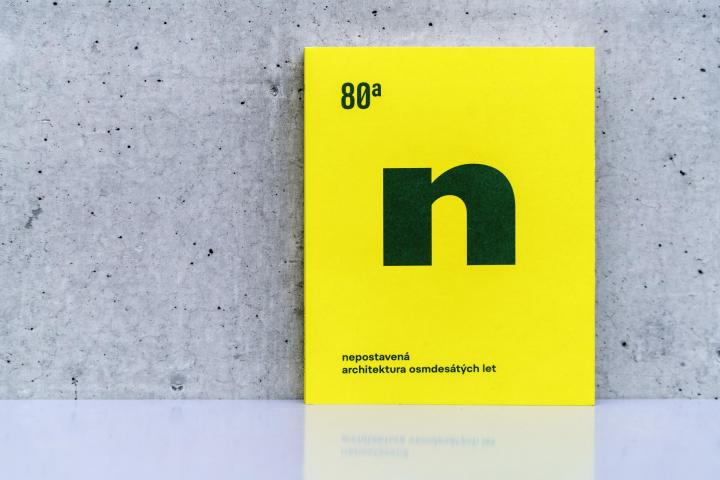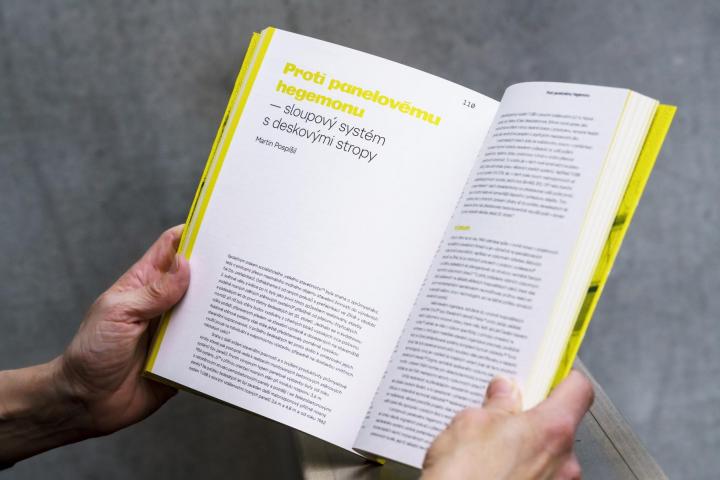
Among the presented unrealized projects, the reader will find serious long-term visions of the modern city, bold technological or expressive experiments, alternative provocations or artistic interventions in public space. Many of the published proposals were, by their nature, doomed to non-implementation, and often the authors did not even count on them, which, however, does not detract from their strength. They were united by the will to transcend the boundaries of standardization practice, to stimulate discussion and to shift architecture to a more humane and responsible approach.
In the book´s ten chapters, it is possible to find studies from the environment of design or research institutes, which were created on the basis of official assignments, as well as the results of individual work of architects or even slightly unofficial "underground" activities. In many respects, the never-built projects give a more eloquent statement about the period of their initiation than projects implemented. They reveal dreams of a better future, provoke, inspire. "If we want to better understand our architecture of the eighties, then we must not overlook the undeveloped visions, which include efforts to rethink the process of built environment creation and finding more room for maneuver within the times of centrally controlled construction engineering," explain in the introduction editors Petr Vorlík and Klára Brůhová from the Institute theory and history of architecture, Faculty of Architecture.
The book follows the events of the period in three parts. In the first three chapters, it maps the reactions to the fading modernist ideas of the 1950s and 1960s, or to their flattening in the era of normalization (70´s). Alternative activities and proposals of this kind sought to correct devastating interventions, such as the technocratic concept of transportation or demolition of contextual new buildings in urban centers.
In the second part of the book, the authors follow the efforts for a more socially and environmentally responsible living environment. They describe experimental projects of research institutes that in the 1970s and 1980s sought more humane, urban forms of architectural ensembles - in terms of their urban layout, location in the landscape or city, as well as in terms of greater flexibility of interior layouts and building technologies.
The last three chapters present visions that consciously exceed the limits of their time and look to a different, better future, even at the cost of a shift to an alternative reality of so-called paper architecture. Pamphlets or “drawer projects” of this type were often created only for shows and exhibitions, or as private fantastic utopias of another, freer world. However, the topic of ecology and renewable energy sources also brought a surprisingly wide range of careful conceptual thinking about the interconnectedness of architecture and the environment in the 1980s.
The book is a loose continuation of the publication (a) type / architecture of the eighties, published in 2019, which deals with implemented projects and selected phenomena in architecture at the end of normalization. The authors also prepare a book of interviews with witnesses, which will be published in early 2021.
unbuilt / eighties architecture
Editors: Petr Vorlík and Klára Brůhová
Authors of individual chapters: Jana Bukačová, Kateřina Čechová, Lenka Kužvartová, Tereza Poláčková, Martin Pospíšil and Martina Vicherková
Published by the Czech Technical University in Prague, Faculty of Architecture, Prague 2020
191 pages
ISBN 978‑80‑01‑06734‑5
Contents of the book
At the end of the era - Prague in the captivity of highways
Torn City - Rehabilitation of block and public space
Eternal tasks - a representative core of the capital
For a more residential everyday life - city parterre and small tasks
Slightly different housing estates - experimental projects of VÚVA
Against the panel hegemony - column system with slab ceilings
Lighten prefabrication - mobile and modular architecture
Escape from reality - drawer projects, utopias and exhibitions
The sun shines and warms - the beginnings of ecological architecture
Urban land art - sewer K and head V
Summary
Index
The book was created as an output of the project Architecture of the 1980s in the Czech Republic - Peculiarity, identity and parallel considerations against the background of standardization in the program of applied research and development of the Ministry of Culture of the Czech Republic National and Cultural Identity - NAKI II.
